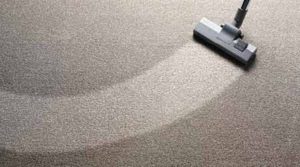Biggest Carpet Care Mistakes, Newport Beach, CA
It is often said that we learn from our mistakes. But when it comes to carpet care, there is no room 
“Not having a proactive maintenance program for soft flooring is the downfall of many facilities,” notes Bill McGarvey, director of training and sustainability for Philip Rosenau Co., Warminster, Pennsylvania. “People wait until the carpets look dirty to clean them, but the problem is carpeting has been designed intentionally to hide the soil. So if we wait until it looks dirty to clean it, then how dirty is it really?”
Like McGarvey, Bill Griffin, president of Cleaning Consultant Services in Seattle, believes that the lack of a carpet maintenance program, including a regular cleaning schedule, is one of the biggest mistakes a facility can make. He also stresses the need for a comprehensive approach when planning and implementing a program.
“People often implement one element of a maintenance program and think that they have a good program in place,” says Griffin. “For instance, they may have low moisture cleaning, but they don’t have deep extraction to go with it. Or they do spotting, but don’t do any deep cleaning. They need a program that has all the elements necessary to give their carpet an effective cleaning, a long life, and a good appearance.”
A Case Of Mistaken Identity
In conjunction with a good carpet maintenance program, facility cleaning managers should familiarize their staff with the carpet manufacturer’s specifications — an element that is often overlooked in carpet care.
“When you look at carpet cleaning, it doesn’t start with the cleaning itself; it starts with the specification and installation of the carpet,” says Griffin. “Even though it’s not something we control directly, different fibers and construction methods impact how we should maintain or spot clean that carpet.”
John Poole, senior consultant for the American Institute of Cleaning Sciences in Atlanta, concurs.
“What people need to know in facilities — and they don’t — is who manufactured the carpet and what kind of carpet they’re dealing with,” he says. “You need to know the specifications so that you know how to maintain it, and you don’t violate the warranty.”
In addition to obtaining manufacturer’s specifications, consultants recommend that custodial workers attend training programs to learn how to identify and evaluate different fibers, which in turn will help them determine the best processes and chemicals for spot treatment, as well as interim and deep cleaning.
“If you don’t know what type of carpet you’re dealing with, you can create a mess,” warns Poole. “For instance, natural fibers will shrink, so it’s imperative to identify the type of carpet you’re dealing with.”
Just as different carpet fibers require different cleaning methods, spills and spots require different cleaning chemicals based on their pH level.
“If I treat a spot with the wrong product, I can take a dime- or quarter-size spot and turn it into a one-foot diameter stain,” says Mickey Crowe, trainer and consultant for CleenTech Consulting Group, Woodstock, Georgia. “If you can identify what the spot is, you’ll know whether to use an acid-based cleaner or an alkaline-based cleaner to attack it.”
When in doubt, Alan Bigger, APPA fellow and facilities management consultant, South Bend, Indiana, suggests testing any chemicals first before applying them directly to the soiled area.
“One of the mistakes people make is they don’t check their chemicals on the carpet in an inconspicuous place, so when they apply them, they might bleach out the carpet.” he says. “Make sure you test any cleaning chemicals or solvents under a desk or in a corner first.”
Bigger also suggests addressing the spot as quickly as possible and avoiding the urge to rub it.
“Blot or remove the excess, and then start from the outside and work inward,” he advises. “And don’t try to rub it because it will spread farther.”

Leave a Reply
Want to join the discussion?Feel free to contribute!